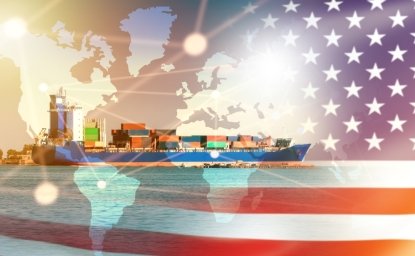In 2006, the Program on Science, Technology, America, and the Global Economy (STAGE) began a series of conferences exploring new thinking in global trade and economic competition. Academic, government, and private sector luminaries focused on how foreign investments and innovations could challenge the trade gains of the United States and other developed countries. They also examined how innovations and strategic investments of European and Asian trading partners could increase their competitiveness. Following their analyses, the participants debated recommendations for U.S. policies to improve the U.S. economy.
Global Competition and Comparative Advantage
At the first meeting of this series in June, Senator Paul Sarbanes described significant changes in the modern global economy. He said China, India, and the former Soviet Union are "
rapidly integrating into [the] world market with conscious policies to promote specific industries that increasingly compete with our major industries," helping explain why the longstanding U.S. surplus in technology goods had given way to a trade deficit.
Senator Sarbanes acknowledged the faith of most economists in the benefits of trade and comparative advantage. Trade patterns, however, are no longer dependent on natural resources or historical patterns. He added, "because a determined government or multinational corporation can easily create comparative advantage in a new location, the United States can no longer blithely assume that everything will work out to our advantage in the end."
Nobel Laureate Paul Samuelson based much of his presentation on his 2004 article in the Journal of Economic Perspectives. He noted that when trading partners improve their comparative advantage in ways that make them more similar to the United States, we lose some of our gains from trade. This does not suggest that the United States should turn away from trade, an approach that would simply lose the remaining gains. Samuelson noted that historically, the greater gains from "
innovation and geographical specialization
went to the catch-up people."
William Baumol of New York University argued that comparative advantage does not describe how trade gains will be shared or how comparative advantage might change over time. Ralph Gomory of the Alfred P. Sloan Foundation noted that the world had changed because "countries can now create comparative advantage."
Baumol and Gomory drew on their work in Global Trade and Conflicting National Interests (2000) to demonstrate how innovation can change comparative advantage. After accounting for economies of scale and the advantages of being first to enter or dominate an industry, trade could lead to a range of effects, from mutual gains to significant losses, including the death of specific industries.
Paul Solman of the NewsHour with Jim Lehrer moderated presentations by Stephen Roach of Morgan Stanley, Edward Graham of the Peterson Institute for International Economics, Thomas Palley, an independent economic consultant, Clyde Prestowitz of the Economic Strategy Institute, and Philip Swagel of the American Enterprise Institute.
Graham cautioned that theories, such as comparative advantage, do change over time, and, therefore, Gomory and Baumol's insights might be overtaken by future developments in theory. Swagel agreed with Samuelson's description of how overseas innovations could reduce the U.S. gains from trade, but cited current statistics suggesting that cheap imports were a net benefit to U.S. consumers.
Roach stressed that trade and comparative advantage could not be discussed in "isolation from the broader macroeconomic framework" of zero savings that has compelled the U.S. economy to "run massive current account and trade deficits." The overvalued dollar has been pushing even high-tech businesses to shift production away from the United States and other developed economies toward countries that adopt tax and other incentives to attract private investment, said Prestowitz. Private sector interests may no longer coincide with national objectives, argued Palley, who pointed to the added challenge of turning U.S. innovations into domestic growth and U.S. jobs.
National Strategies for Building Comparative Advantage
At a follow-up seminar on November 16, Senators Lamar Alexander and Jeff Bingaman called for increased funding for the physical sciences, improved education in math, science, and engineering, and recruitment of greater numbers of U.S. scientists and engineers. Their proposals drew on recommendations contained in Rising Above the Gathering Storm, a National Academies study done in response to a joint Alexander-Bingaman request.
Former Secretary Peter Peterson, chairman of the Blackstone Group, warned that current and future deficits would undermine the foundations of the U.S. economy. He called for business and political leaders to form a high-level commission to study and make recommendations on key challenges to future U.S. prosperity.
Steven Pearlstein of The Washington Post led the first panel that examined industrial countries' strategies for building comparative advantage. Mark Lehrer of the Sawyer Business School of Suffolk University described how Germany had improved mid-technology fields such as cars and machine tools but had not generated breakthrough discoveries. Gary Hufbauer of the Peterson Institute for International Economics noted the importance of England's Silicon Glen but put more emphasis on Ireland's successful strategy of combining a well-educated populace and tax incentives to attract foreign investment.
Mark Tilton of Purdue University described Japan's continued strength in the automotive, machine tool, and electronics industries. Japan was also working to make major changes in its university system to facilitate the kind of closer collaboration with industry that had yielded benefits in the United States. However, Tilton did not think that Japan would become a U.S.-like innovator in the near future.
John Cranford of the Congressional Quarterly hosted a panel that discussed developing country strategies. China, for example, has had great success in attracting technology, management talent, and foreign investment, while building world-class research institutions, and upgrading from low-tech to more advanced products, said Carl Dahlman of Georgetown University. India has succeeded in providing online services that have grown from call centers to more challenging fields such as legal research and chip design, said T.N. Srinivasan of Yale University. India also has attracted increasing amounts of R&D investment from U.S. companies with the quality of its research talent.
Several South East Asian countries have combined their own efforts with tax incentives to attract high-technology foreign investment, noted Bryan Ritchie of Michigan State University. Singapore has moved from routine to more advanced manufacturing. Its limited size, however, suggests that its approach may hold more lessons for U.S. states or large cities than for the country at large.
Other speakers, including The National Journal's Bruce Stokes, examined how the United States should respond to challenges from rising global competition. Vinod Aggarwal, of the University of California at Berkeley, and Rob Atkinson, of the Information Technology and Innovation Foundation, warned against being constrained by historical theories. Aggarwal noted the strategies pursued by emerging market countries and stressed the importance of dynamic, rather than static, comparative advantage.
Atkinson called for an economic policy focused on innovation rather than the traditional emphasis on efficiency or distribution. Susan Butts of the Dow Chemical Company, explained how the private sector was driven by market forces to aggressively go after opportunities overseas. Intellectual property protection, while a priority, was less critical than gaining market share in countries like China and India.
Two challenges addressed by Ralph Gomory were the record current account deficit and how to ensure that U.S. innovations translated into U.S. growth, investment, and jobs. Gomory suggested the current account deficit could be addressed through Warren Buffett's theory of balancing trade by introducing tradable import certificates gradually to purchasers of U.S. exports to bring the two into balance. Gomory also suggested the aggressive use of tax incentives linked to investment and employment.
Roundtable discussions on strengthening the U.S. economy focused on long-term debts and deficits, the U.S. lead in innovation, turning innovations into high-paying U.S. jobs, the Gomory-Buffett idea of tradable import certificates, sharply improved K-12 education, and the development of alternative forms of energy. With these conferences, STAGE is defining future paths and opportunities for the U.S. economy by examining new thinking on the changing nature of the American economy, analyzing global trends, and searching for policies that will build the future.
written by Kent Hughes



